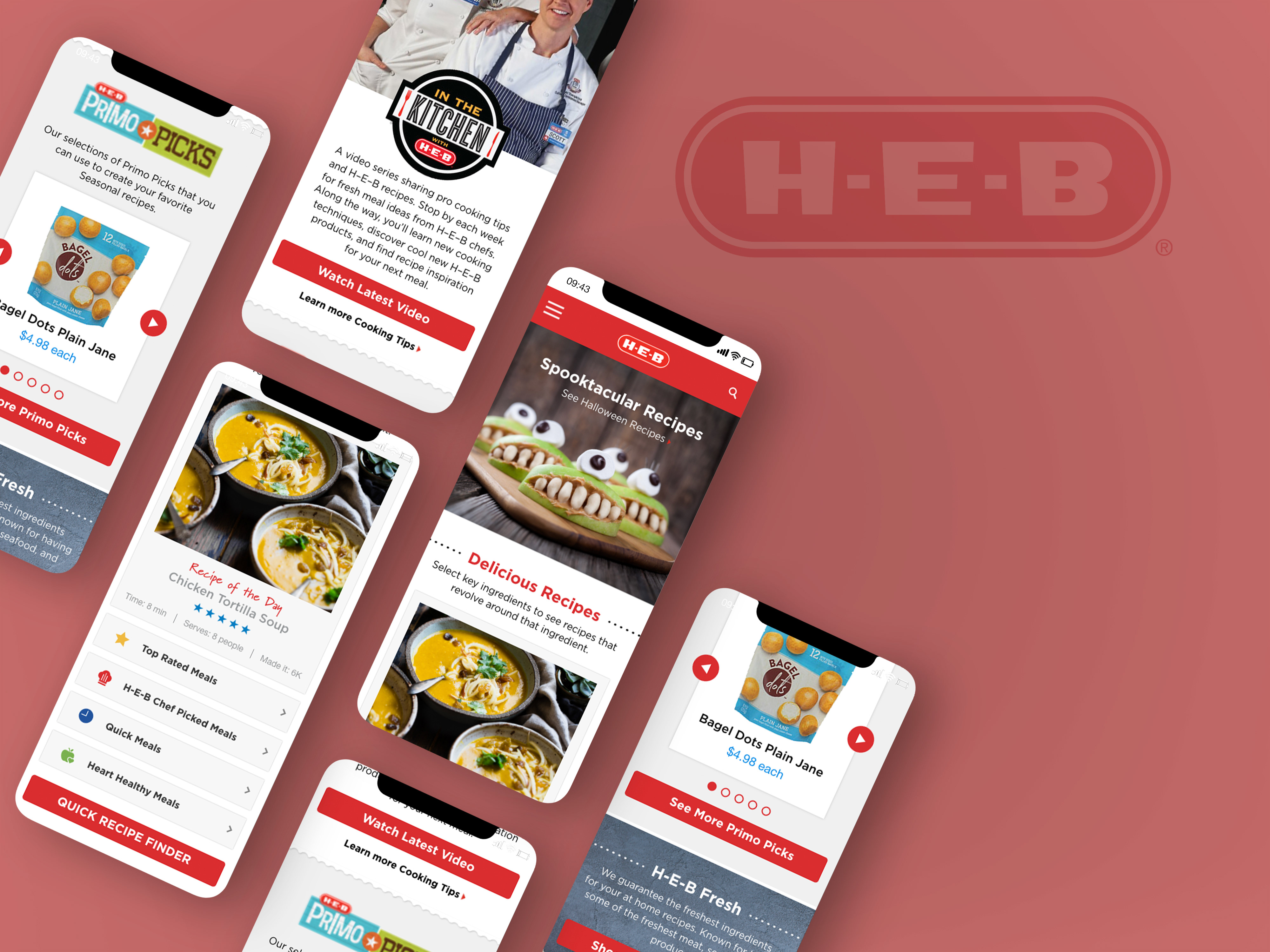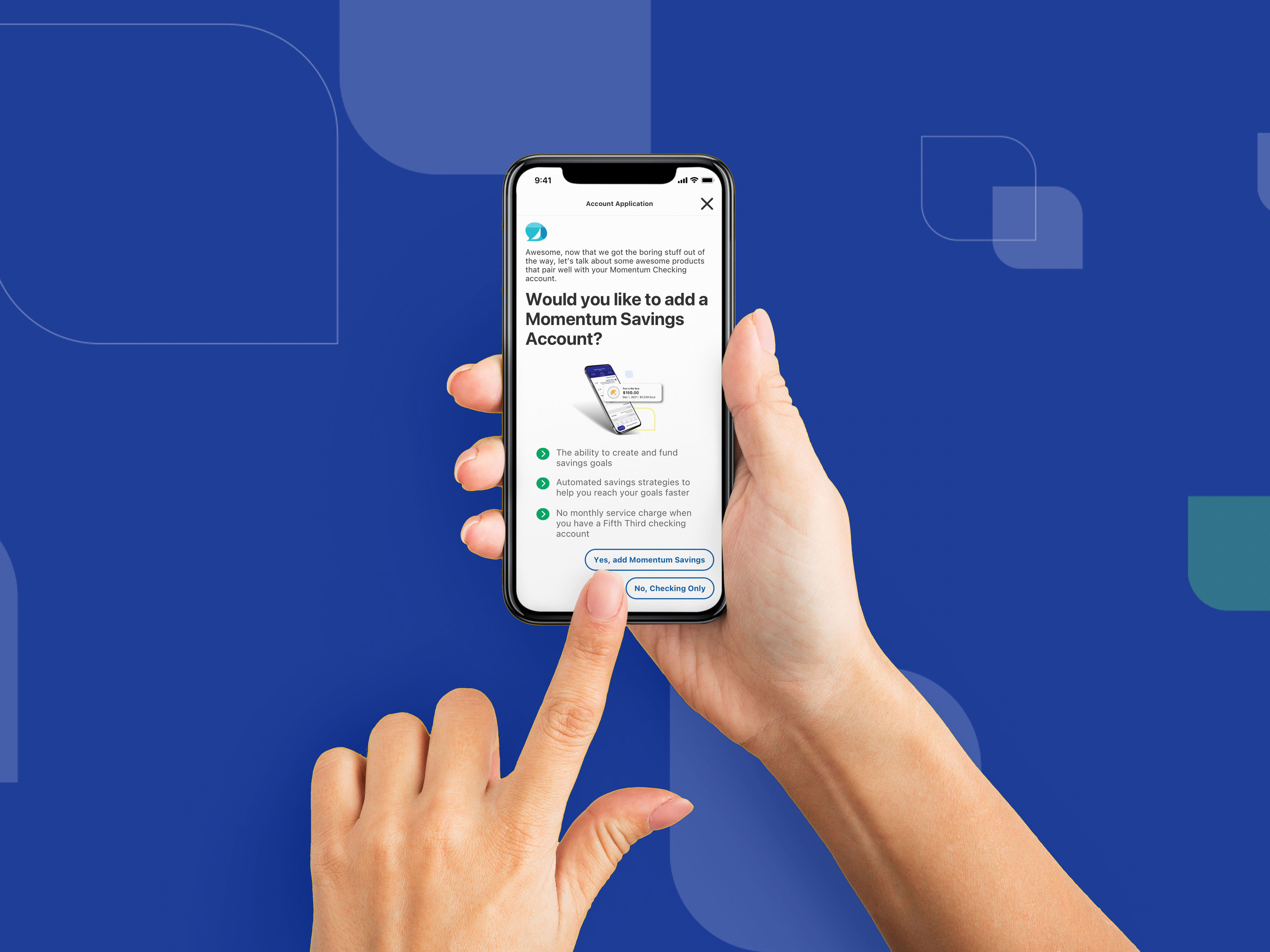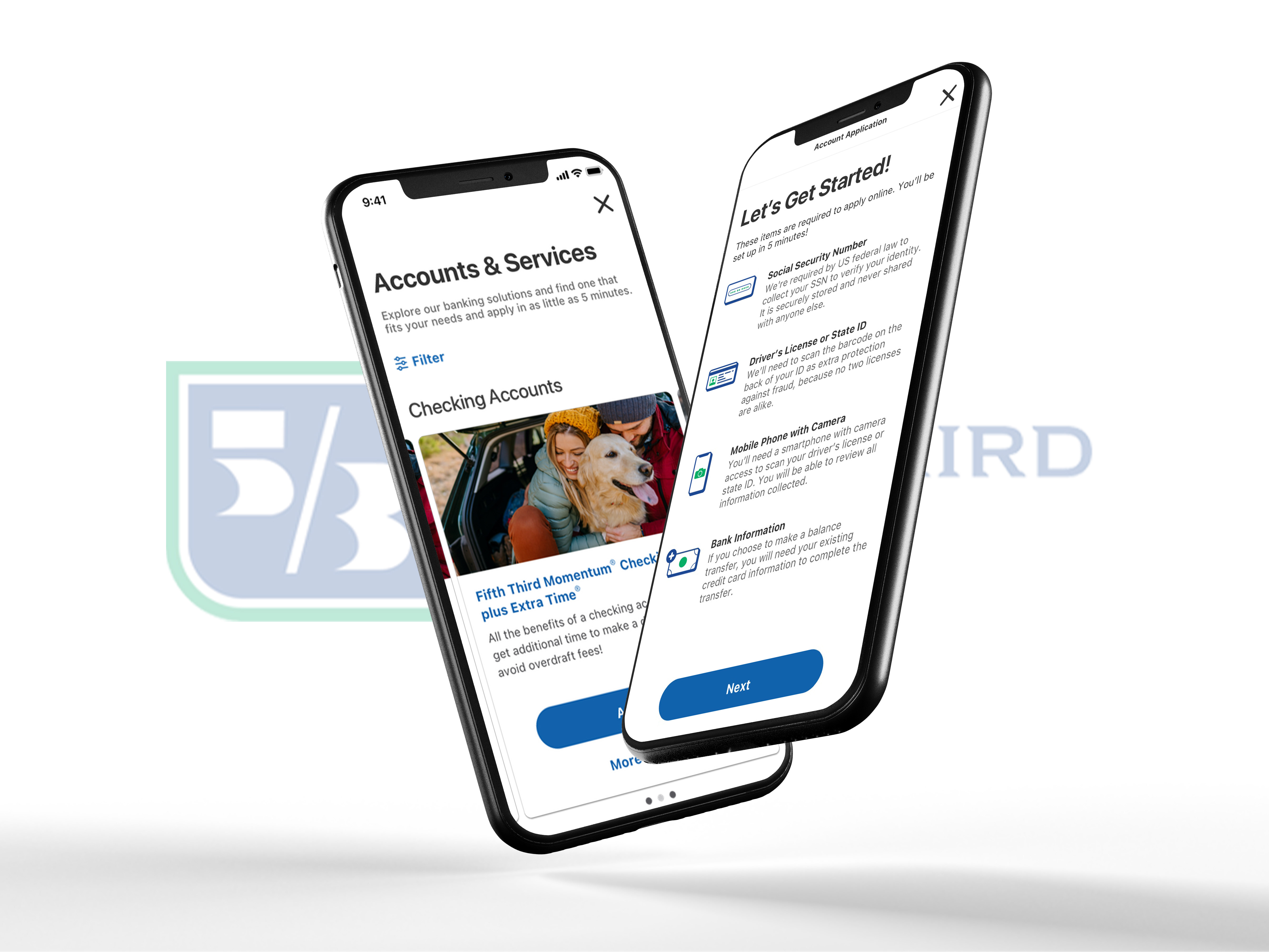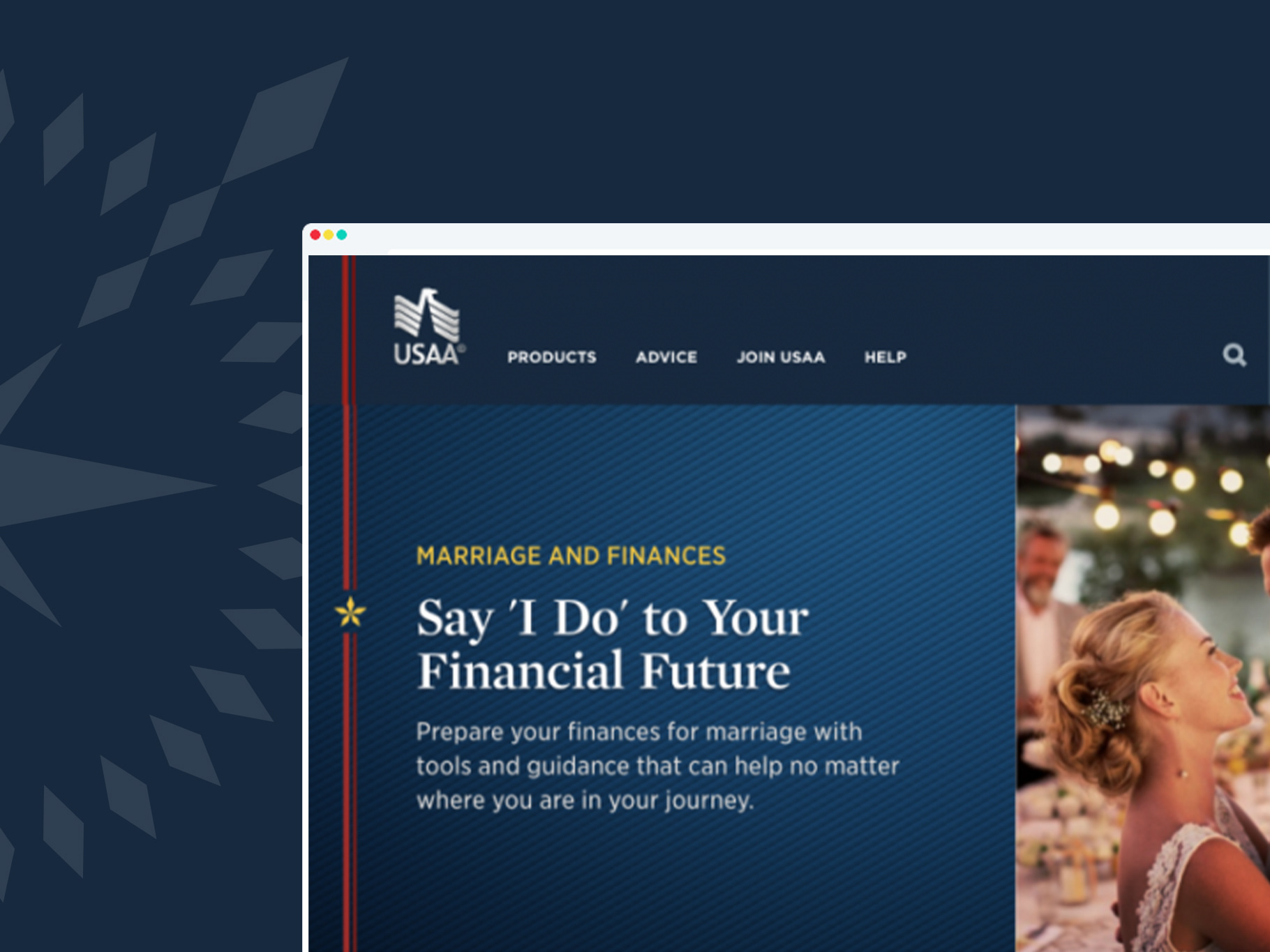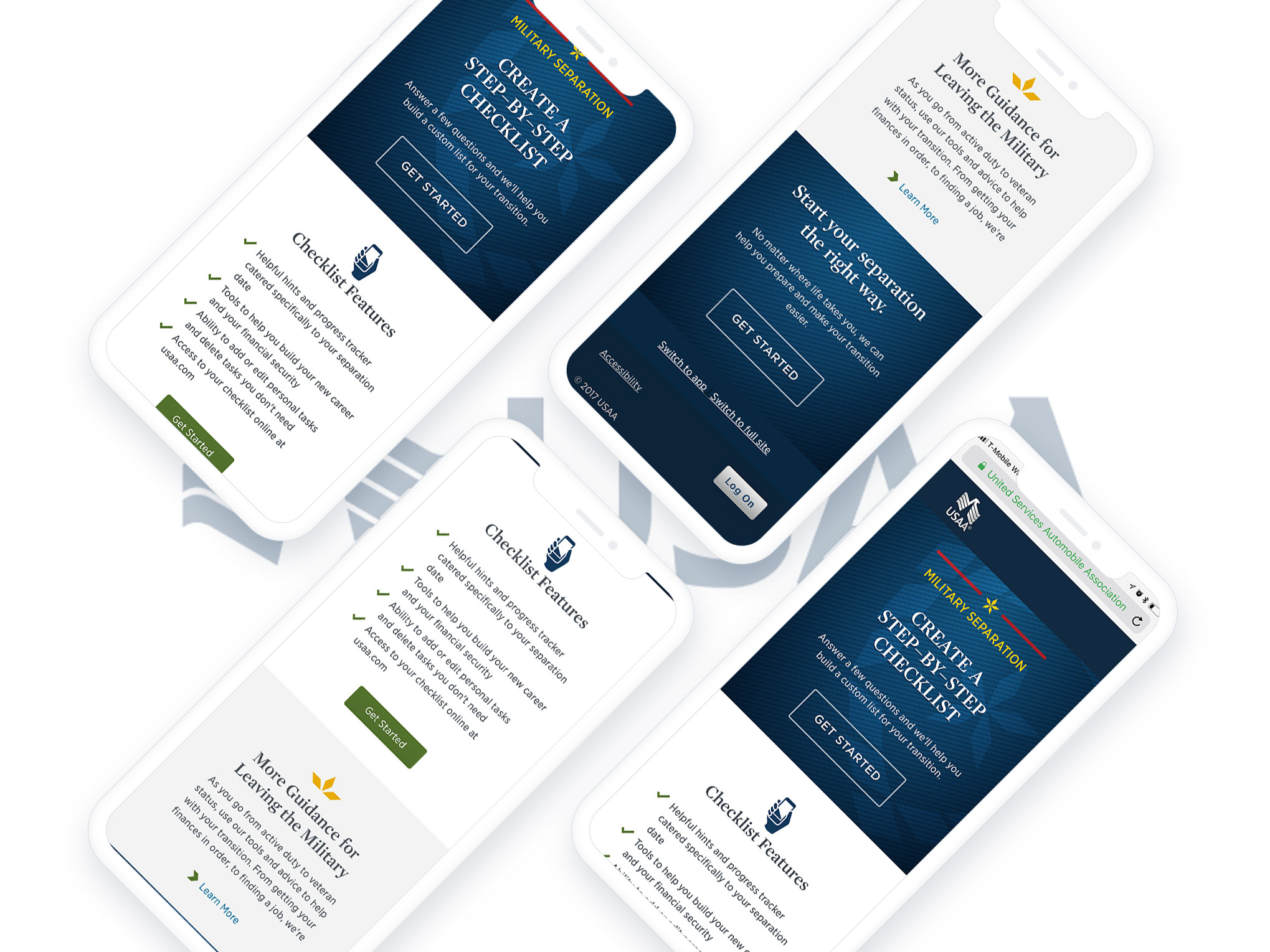Company: Niche.com
Sector: Edtech
Role: Strategy lead and facilitator
The Opportunity
Niche relies on healthy engagement from all education verticals as a dual-sided marketplace. As we began our annual planning for 2023, we identified an opportunity in the graduate school segment. Up to this point, the graduate segment was our lowest-performing segment. We lacked traffic and engagement from grad school seekers, making it hard to sell products to graduate schools across the country.
To increase and provide business value in the graduate segment, we needed to understand how to offer more value to graduate seekers we bring to our site and interact with grad schools as potential students.
Discovery
Secondary Research
First, we wanted to understand what resources existed for grad searchers out in the wild. We began by looking for articles that helped grad students understand things they may need to consider when looking at grad schools. This allowed us better understand things that might be important to people searching for their future grad program in a primarily digital world.
Discovery Workshop
We started by gathering all of the key stakeholders to start documenting all of the knowns and assumptions we had about our grad users and their experiences on our site. We had everyone begin recording the who, what, where, and why. Once we had documented all of the knowns and assumptions, we started writing problem statements that would help us align on the gap between our product and the user's behaviors, pain points, and goals.
Our problem statement:
"When a grad seeker needs to research the grad schools on niche.com, they often find a lack of information with high-level details about each school which then causes them to have to go elsewhere to find and compare different grad schools."
Once we had curated our problem statement, we began documenting any knowledge gaps we had. We recorded our knowns and identified areas where our knowledge gaps were. The themes for our knowledge gaps were:
1. Program Details
2. Financials
3. Return on Investment
4. Lifestyle Fit
5. Program Motivated
2. Financials
3. Return on Investment
4. Lifestyle Fit
5. Program Motivated
After documenting our themes, we began creating our research proposal and writing the questions we wanted to be answered.
User Interviews
At this point, we were ready to interview our users to close our knowledge gaps. We interviewed 12 prospective grad students who had either just started grad school or had been accepted and were waiting to begin their graduate degree.
Key Findings
1. We found that the most crucial thing to prospective grad students was the total cost of the program and what kind of scholarships they might receive to help pay for their degree.
2. The next theme we saw was that grad searchers were very concerned with the outcomes of their graduate degrees. They wanted to know what types of jobs their degree would yield and what salary they could expect once they completed their schooling.
3. Grad researchers were also very dependent on hearing other students' thoughts about their programs. They wanted to understand if students had a good experience. They wanted to know if students felt supported by a good student-to-professor ratio. Was the professor someone who had worked in the field they were teaching?
4. One of the most surprising things we learned about grad searchers was that they care less about the school as a whole and more about the program they would be attending. This is very different from how we treat our undergraduate schools, where students care about the credibility of the schools as a whole. This information could potentially change how we had been doing business with grad schools.
S.W.O.T Analysis
Once we understood the user's needs and what they were looking for when considering a grad degree, we wanted to know how others might solve this same problem. We set out to uncover how our competitors and schools surfaced the information students sought.
What we found supported everything we had heard from our prospective grad students. No one was doing a great job surfacing all the information they were looking for. Even when they were surfacing that information, it was buried deep within their digital experience. We also found that grad schools were not doing a great job of making this information readily available to students.
This presented us with a huge opportunity!
Define
User Journey Mapping
Once we had gathered all our research and competitive analysis, we documented the user journey and areas where we had opportunities to make it easier for users to accomplish their goals when searching and applying for grad schools.
Vision
Niche is creating connections between grad searchers and schools at the program level by providing essential information on affordability, outcomes, and user-generated content.
What does success look like?
• Searchers can go from the start of their journey to connecting with a school without leaving Niche.
• Searchers can identify programs that fit their lifestyle needs and personal preferences.
• Searchers can get a sense of ROI and what it's like' at the program level.
• Searchers can signal interest in a specific program when connecting to a school.
Design
Ideation
At this point, we gathered our cross-functional team to conduct an ideation session. Each person was sketching how they would solve the users' needs based on all the information we had uncovered up to this point.

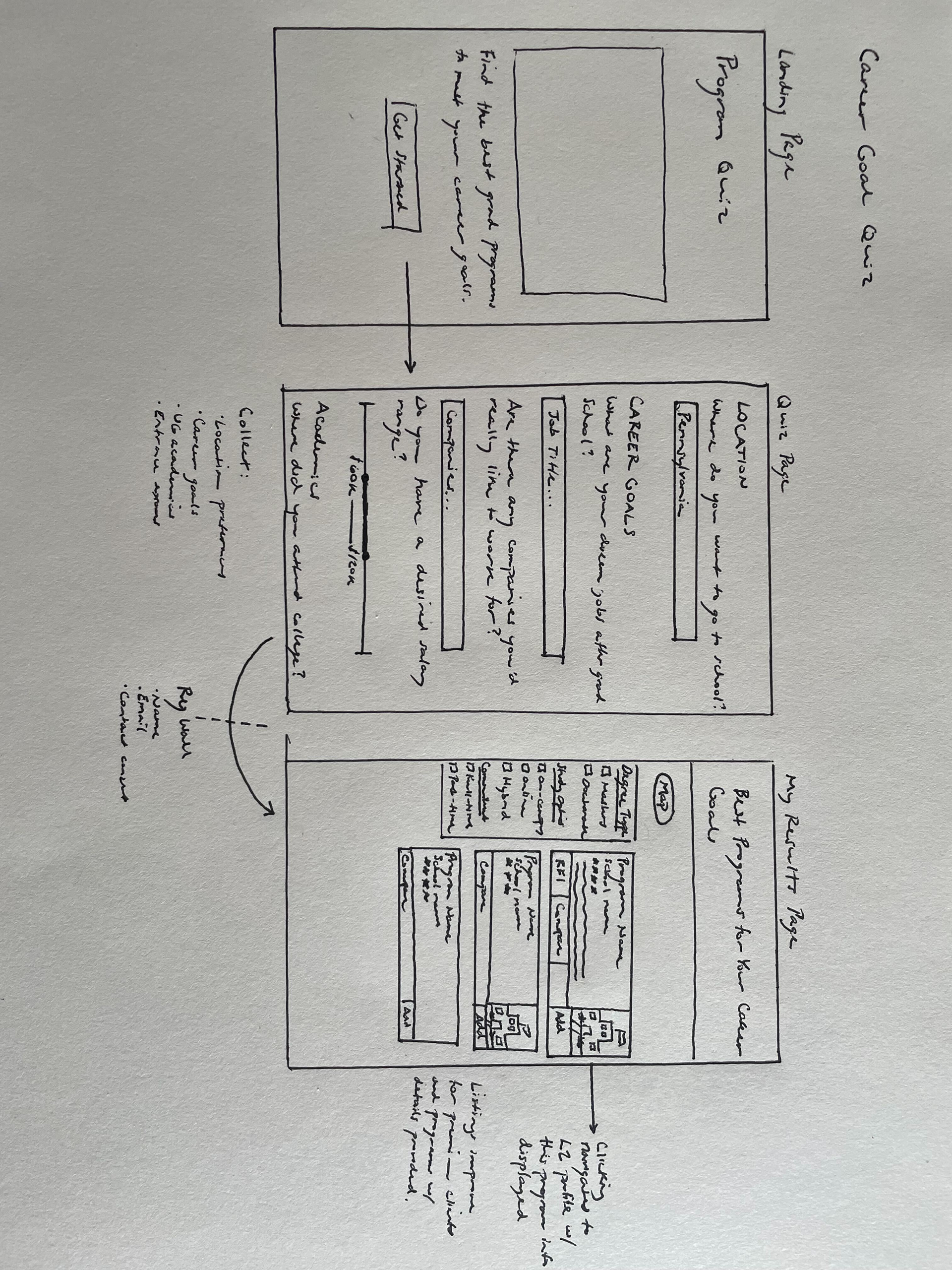
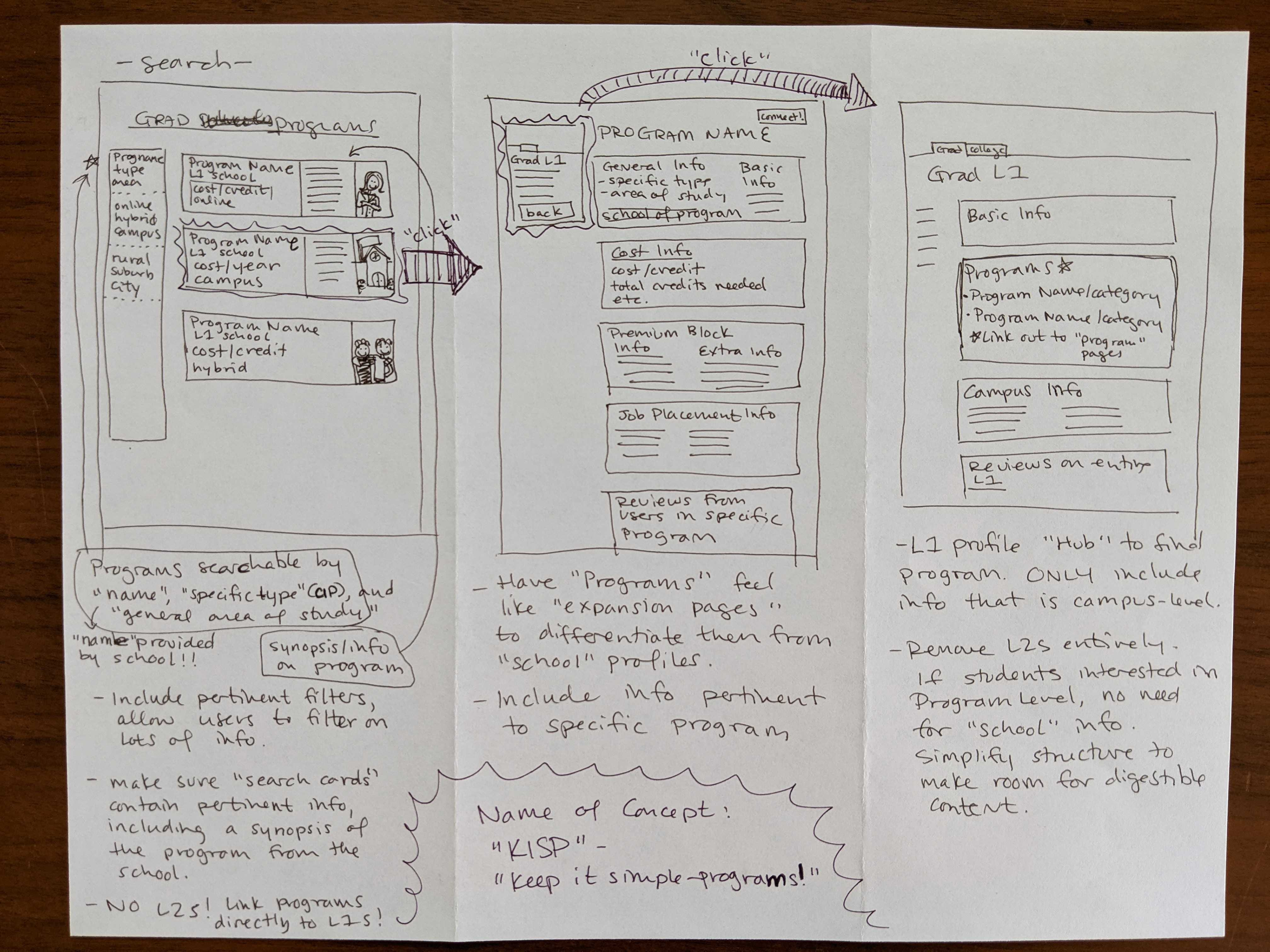
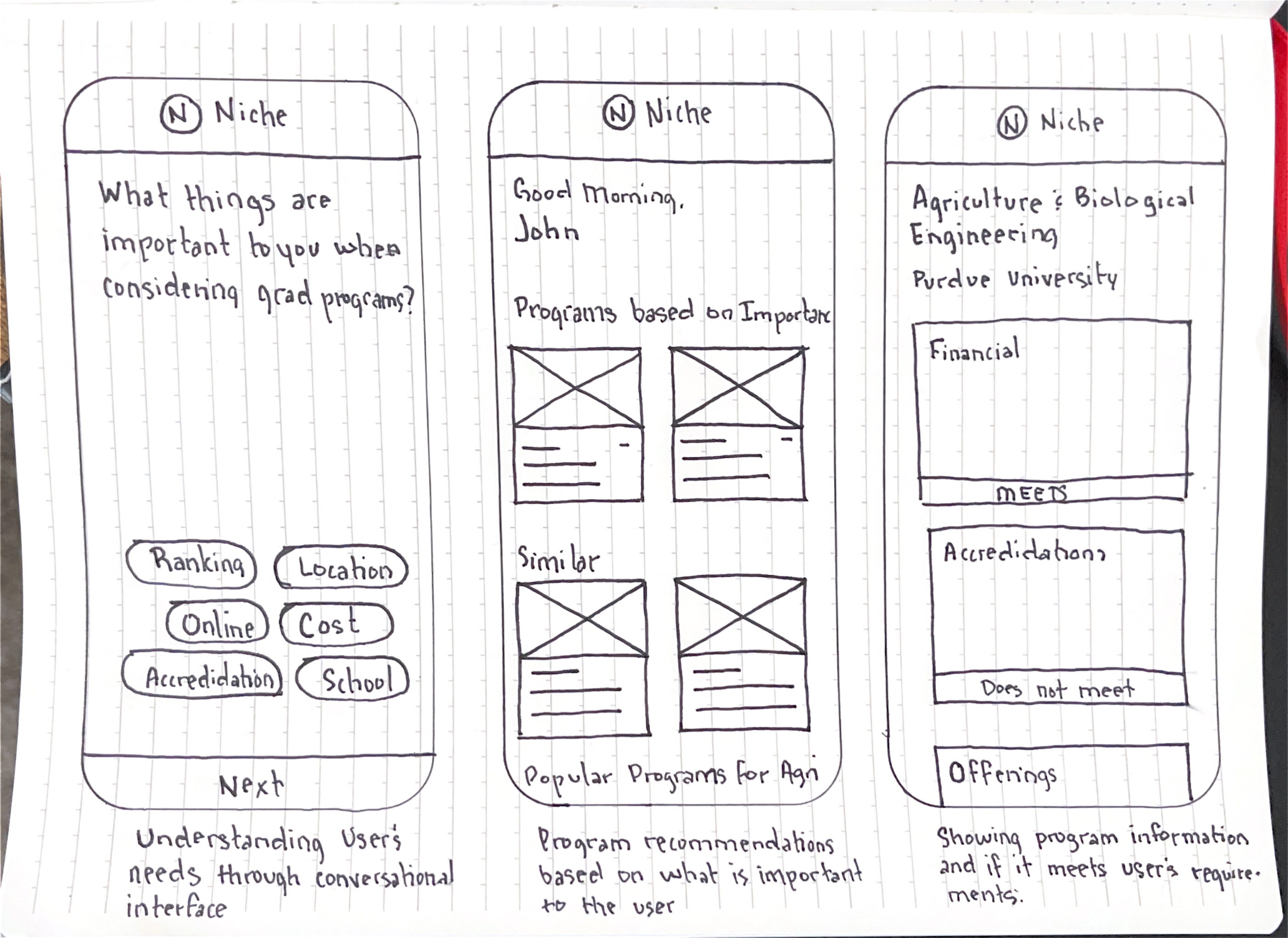
Once we shared our concepts, we worked to align on what made the most sense to move forward with. What was technically feasible, and what made the most sense for users in helping them find the right grad programs.
What we had landed on would become more of an innovation project as we moved forward. We were breaking away from our standard product to create a product that worked for the grad segment.
High Fidelity Design
Combining our concepts with what was feasible and met the users' needs, we began to push for each grad program to be its own entity on the Niche website. This began to adopt the grad searchers' mental model when researching what they wanted from their grad program.
Usability Testing
Once we had our working prototype we sought to understand how this was meeting our users' goals when searching for a grad program. For the most part, we were delivering a lot of what they were looking for. As with everything though we came away with a few learnings.
1. Students were not easily able to navigate to the actual college's entity page from the programs pages. Clicking on the Johns Hopkins School of Medicine name was not evident that it would take them back to the school's page.
2. They also found the grade rankings a bit confusing because they were not sure if they applied to the program or the school as a whole.
Delivery
Minimum Viable Product
To begin shifting to a program-focused grad search, we had to make some sacrifices for our first iteration. The infrastructure pushed back on our efforts to give each program its own page, so we retrofitted the essential aspects of each program to the school's page to provide the users with the most important information they needed when searching for their future grad program.
Outcomes
After rolling this feature live, schools became more motivated to update their program information through the partner portal. Because of this information, we saw grad search interactions with our site increase by over 800% in Q3 2022. This was a sign that we were meeting students' needs while also bringing back business value for our company and partner schools.
In the end, we decided to stop at the M.V.P. because our original concept of each program having its entity profile page was not worth the lift that it would require to be able to change the infrastructure around our core product.

